How to Set SNP Inventory Overage Alerts
Executive Summary
- The SNP overage alert view is available in APO.
- The SNP overage alert enables the target stock level and the safety days supply.
- We cover how the TSL or target stocking level is derived. We cover the best way to populate the TSL value.
Introduction
The alerts under the Supply and Demand Planning area offer many shortfall alerts but not many overage alerts. The one SNP inventory overage alert that is available is highlighted below.
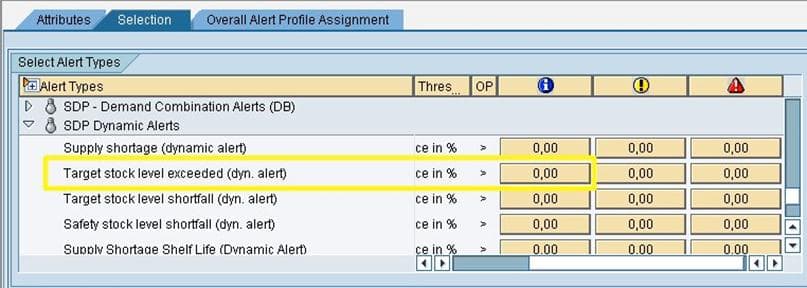
This SNP inventory overage alert applies to the target stock level exceeded.
The TSL and Overage Alerts
Not all companies implement target stock levels, and therefore those that do not calculate a TSL have limited options for overage alerts. Furthermore, the alerts are configured only to work in one direction. All the alert operands (The greater than the symbol listed above) are set in one direction.
They can’t be set in the opposite direction; if the operands were bi-directional, this would allow every one of these alerts to work in two ways instead of just one way. SAP also does not allow negative values, enabling the alerts to be set in two directions instead of one direction.
The SNP Overage Alert View
The closest alert to this would be the Target Stock Level Exceeded and the Target Stock level Shortfall alerts.
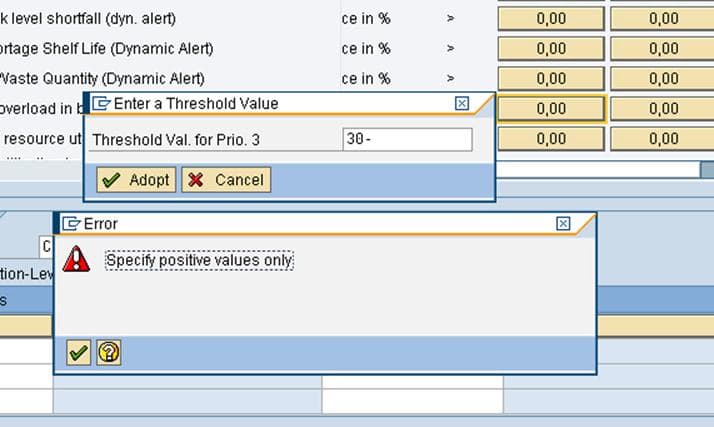
Enabling Target Stock Level and the Safety Days Supply
Once we have determined that the Target Stock Level Exceeded and the Target Stock level Shortfall alerts are desirable alerts to enable, then the question is how to turn on the Target Stock Level (TSL) functionality, which would allow these alerts to be activated.
To do this, it is essential to understand how TSL is derived.
How the TSL is Derived
TSL is not a particular field in APO but is a calculated value that can set seven different ways. Additionally, TSL is a value that does not interact with all of the planning procedures. TSL interacts with and influences the SNP heuristic but not the SNP cost optimizer. That means that the optimizer will not adjust the value in the TSL.
Even though a client is using the optimizer, the TSL should still be used to drive alerts. SAP offers the following way to set the TSL value.
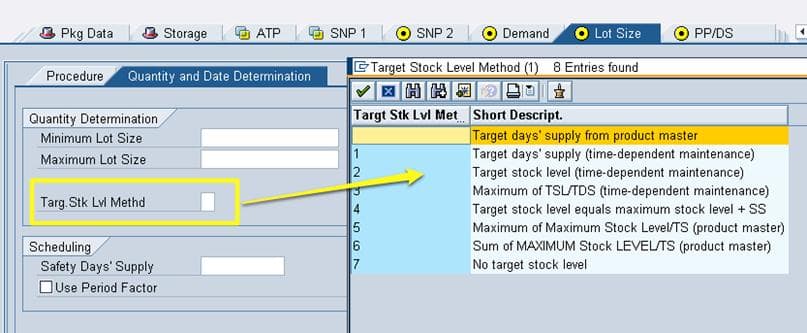
The most well-known method for managing the TSL is to populate it with an external system, such as an inventory optimization tool.
In this case, the value is placed into the Location Product Master. Another way, as can be seen below, is to use options such as option five above, which sets the TSL to the Maximum Stock Level + Safety Stocks.
The Best Way to Populate the TSL Value
The most straightforward way to populate the TSL based upon the data that a client had already has developed and had access to is to use the Target Days’ Supply (option 1 in the screenshot above), which will convert the Target Days Supply into the TSL.
There are two options for basing the TSL on Target days’ supply. They are listed below:
- From the Product Location Master
- In time-dependent maintenance
The time-dependent maintenance is what shows within the planning book, in which there is an example below.
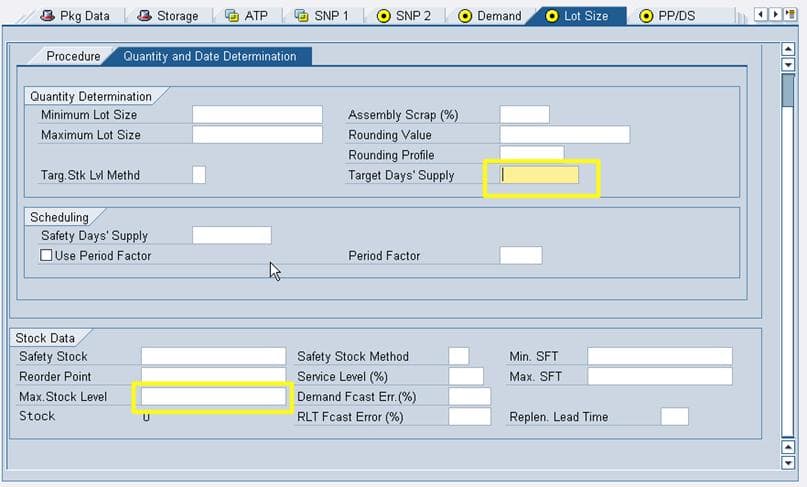
Currently, this is not populated in SAP SNP, yet the essentially similar field is called the Safety Time / Act / Cov, which exists on the MRP 2 tab in the material master in SAP ERP.
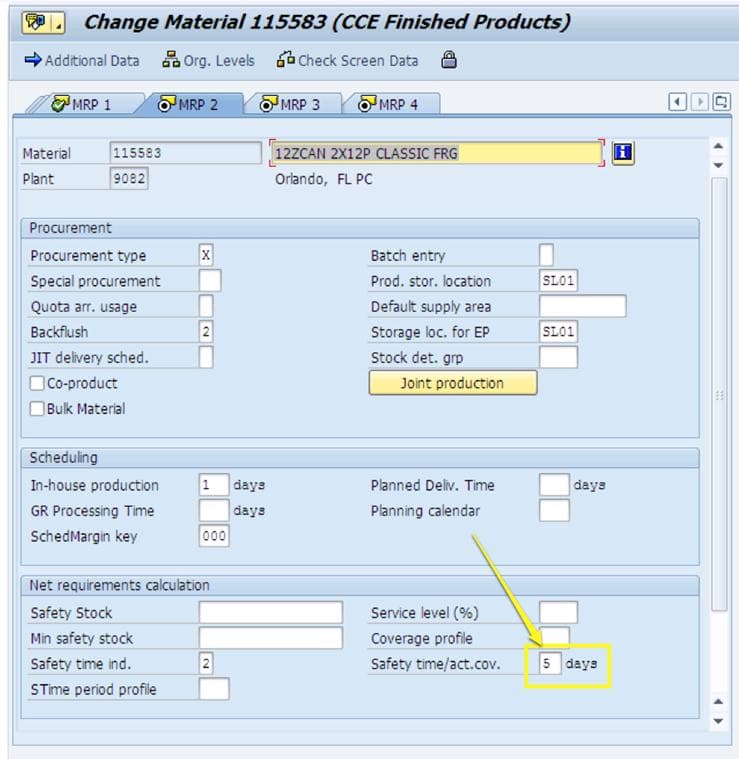
Conclusion
The most desired alert by planning, both overage and under the shipped versus forecast, is not available within APO and needs to be met with a report. This report does not exist what causes planners to create ad hock reports, which can not be exported from SAP to Excel (due to formatting issues). It must be printed and manually searched through, wasting a significant amount of planner time. Of the alerts that deal with overages, one could help central planning, although it is not a substitute for the shipped versus forecast report described above.
- This alert is Target Stock Level Exceeded.
- To use Target Stock Level Exceeded, Target Stock Level must be activated.
- The way which most leverages pre-existing data is to take the Safety Time / Act.Cov field maintained in SAP ERP, which populates the Safety Days Target key figure in the ZNA_SNP planning book and populates the SNP2 tab in the Location Product Master.
- After that is accomplished, the Target Stock Level Exceeded alert could be configured.